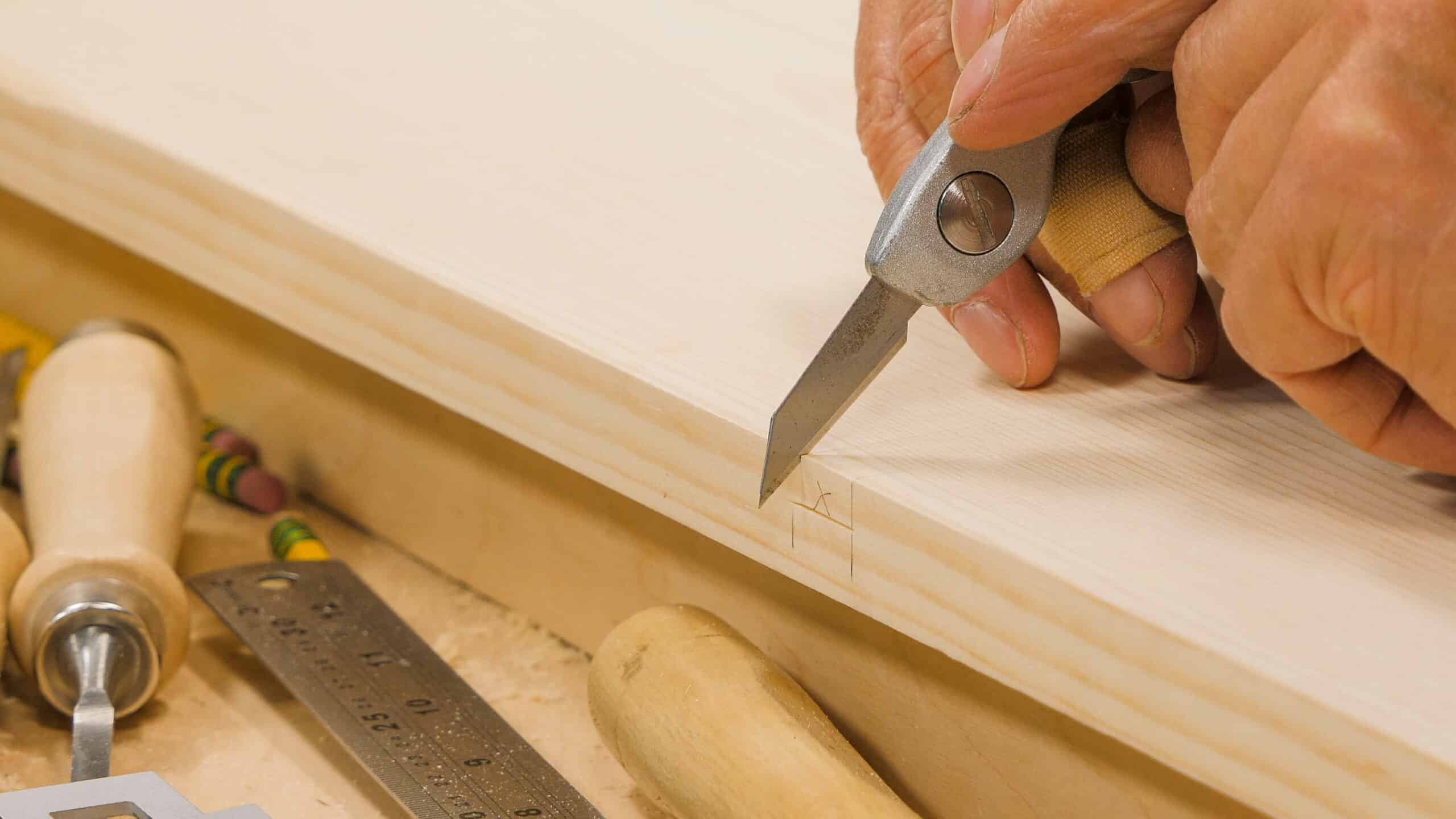Linen Cupboard: Episode 5
Posted 21 October 2020
This is an episode in a paid series. Want to watch it? You just need to sign up as a paid member, and you can enjoy this video and many other videos we think you will love.
Laying out and creating a sliding dovetail across a wide board is not usually something that comes up too often, but it is so well worth knowing how to make one if it does. Paul takes you through the details of laying out and cutting the tapered and angled recess to establish a perfect first half and then walks you through cutting and fitting the corresponding piece. Sliding dovetails are most enjoyable to make, so we hope that you enjoy this video episode.
BOOKMARKS:
LAYING OUT & CUTTING THE SLIDING DOVETAIL – 00:07
FITTING THE SLIDING DOVETAIL – 30:46


Very nice joint sliding dovetail. Very nice pine boards too, no knots. Is it possible to say what depot it comes from?
Hi,
Paul says:
It came from Sydenhams in Abingdon UK.
Kind Regards,
Izzy
Brilliant camera work!!!
I can hear every time your knife hits a growth ring in that pine!
What is the reasoning for tapering the dovetail. Why not just make it the same width for the full length of the shelf?
Hi Dennis,
Paul says:
Because if you made it the full width of the shelf, it would be most unlikely that you could get the joint to go together. The taper means that the union really takes full seating over the last 2 or 3”. Imagine with glue and friction how impossible this would be to unite the two.
Kind Regards,
Izzy
Thanks Paul. I have recently purchased all the necessary cherry to make a shaker chimney cabinet. I will incorporate tapered sliding dovetails into the piece. I do have a few general questions:
1. Is there a convention (or a reason) in which the dovetail part of the dado goes always on either the top or bottom side?
2. Can you think of any general situations in which we might considered using the dovetail on both sides of this housing dado joint?
3. I bought a 2″ chisel a while ago, is creating along housing dado like this a good place to use it? Any downside to using a wider chisel that I might not be thinking of?
Sincerely,
Joe
Hi Joe,
Paul says:
1) Usually the top side is without any taper or dovetail because if there is any break in the join line it will be unseen on the underside of the shelf. That said, generally we only use the single sided sliding dovetail joint when the shelf is indeed between two side pieces. If you make a sliding dovetail where there is no opposite side you would do the dovetail on both sides of the dovetail piece. Otherwise, there would be unequal pressure on the dovetail and it would tend not to sit square.
2)This could happen in a variety of ways, for instance as a divider hanging down from a cross member or a divider in a section of drawers.
3) I’ve always found 2” chisels to be of little value. I have a couple but I never use them. Frankly, I very rarely use a chisel wider than 1”.
Kind Regards,
Izzy
Another great project where accuracy and patience is emphasized! I would have thought Paul would have clamped the strong back board on the center shelf to take the bow out when fitting the sliding dovetail rather than shaving some off the backside with his plane? Obviously he still gets a great fit by planing out the bow rather than straightening with a strong back as he did when marking the dovetail.
Thank you for the video Mr. Seller. Two questions:
1. Is there a reason why the dado isn’t fully dovetailed? Is a full dovetail ever used for this kind of sliding dovetail joint? If so, when?
2. Would this sliding dovetail joint be an alternative to the normal dado with screws joint that you used on one of your bookcases? I am just curious because I am looking to build a bookcase, and I am don’t know if I really like the idea of lots of screws and plugs. So, I am just trying to understand what traditionally the standard procedure would have been for something like a bookshelf.
Thank you. I really appreciate everything you do for the hand tool woodworking community.
Robert
I so appreciate the clear, direct and thorough way you folks answer questions. This really is a top notch site. You all reflect the level of professionalism that Paul strive for in his craftsmanship. As we say on this side of the pond, you hit it out of the park.
Rob Drown
Olivehurst, California, USA
I have seen Paul plane the ends of boards to be square in manny videos. What do I need to do to make sure that I still get the final length for my work piece? Is it best to just cut proud of your knife/pencil line?
Hi Alec,
Paul says:
Ideally yes, cutting proud by a small amount guarantees the length stays the same.
Izzy
Is that a new dovetail template?
Hi Jean,
Paul was asked this question previously so I have pasted his response below for you:
I wanted to design a dovetail template based on my wooden one but from anodised aluminium. I have one made from titanium but it’s 50 times heavier than anything I anticipated. A friend of mine has a milling machine and the equipment to make these for me so I ordered half a dozen and have been testing this one out for a month now to see how it feels. I have thought about producing them for sale and feel like it would be a great dovetail template for anyone to own. Watch this space!
Izzy